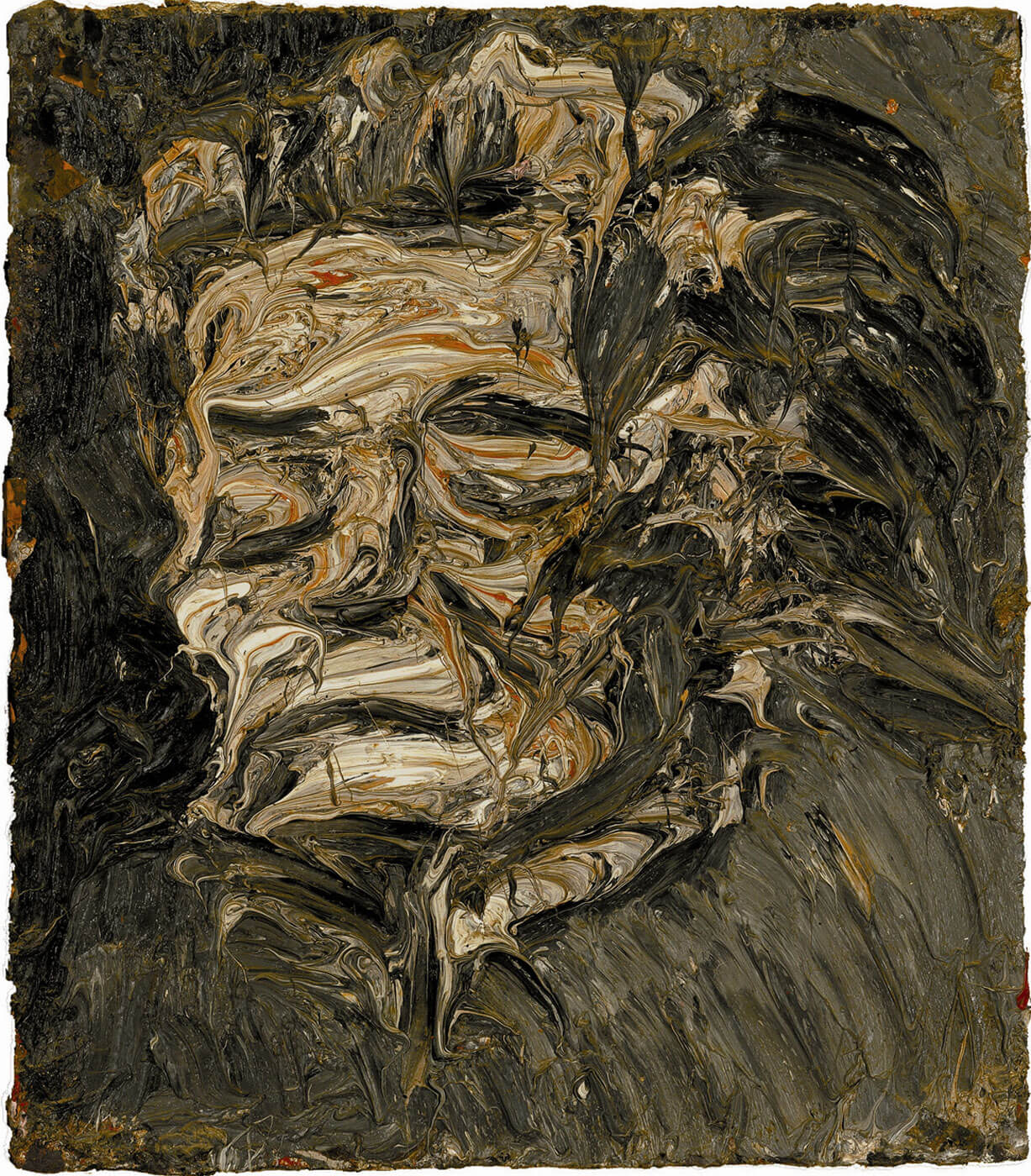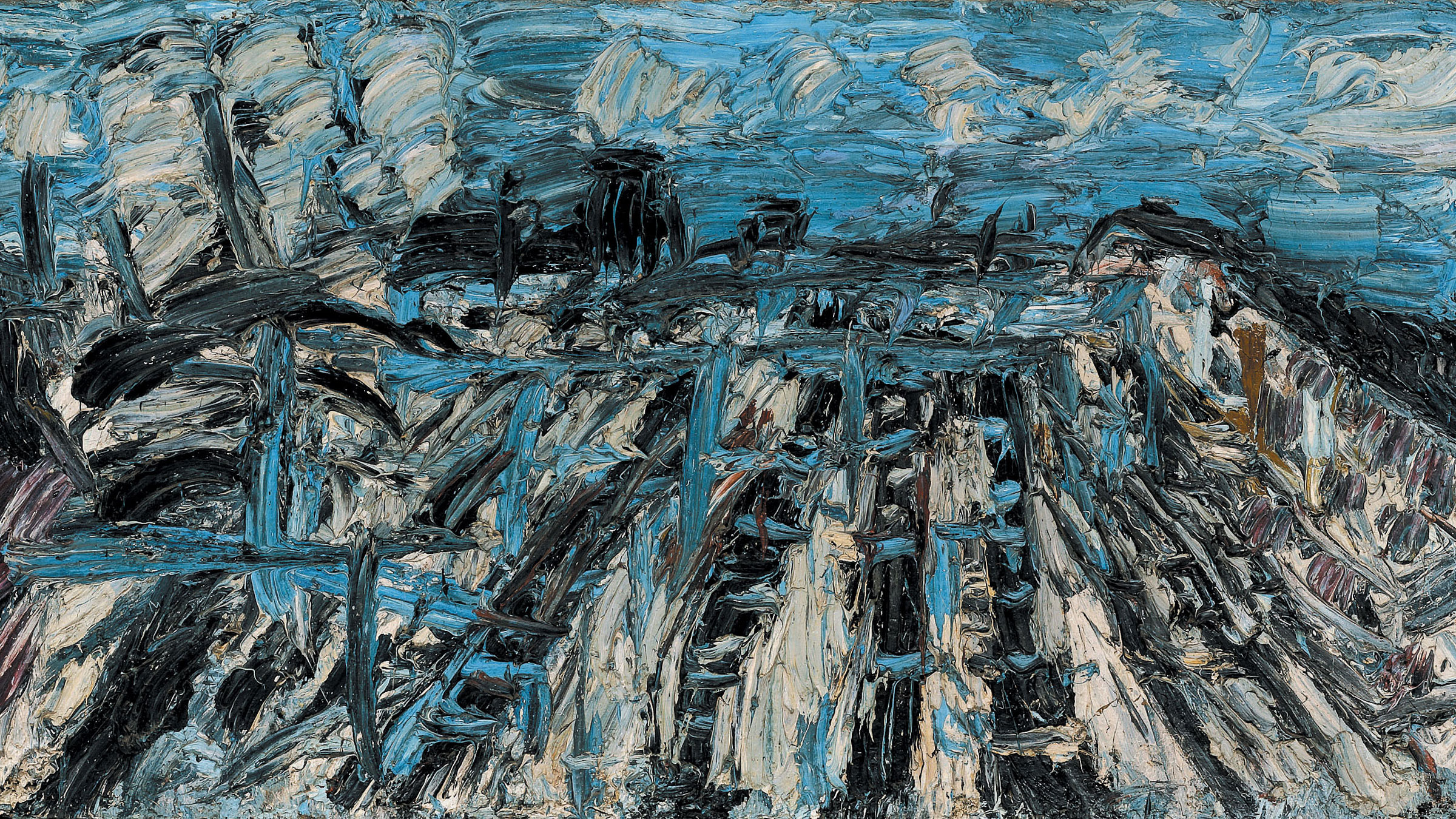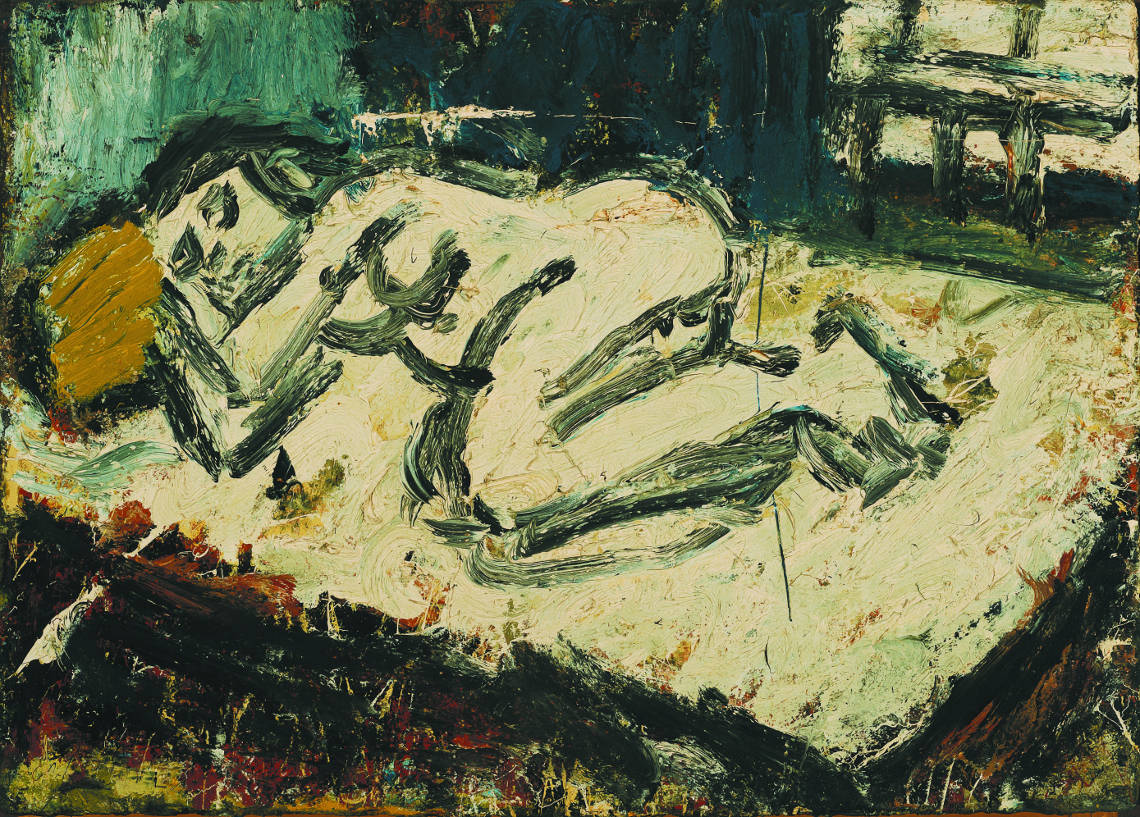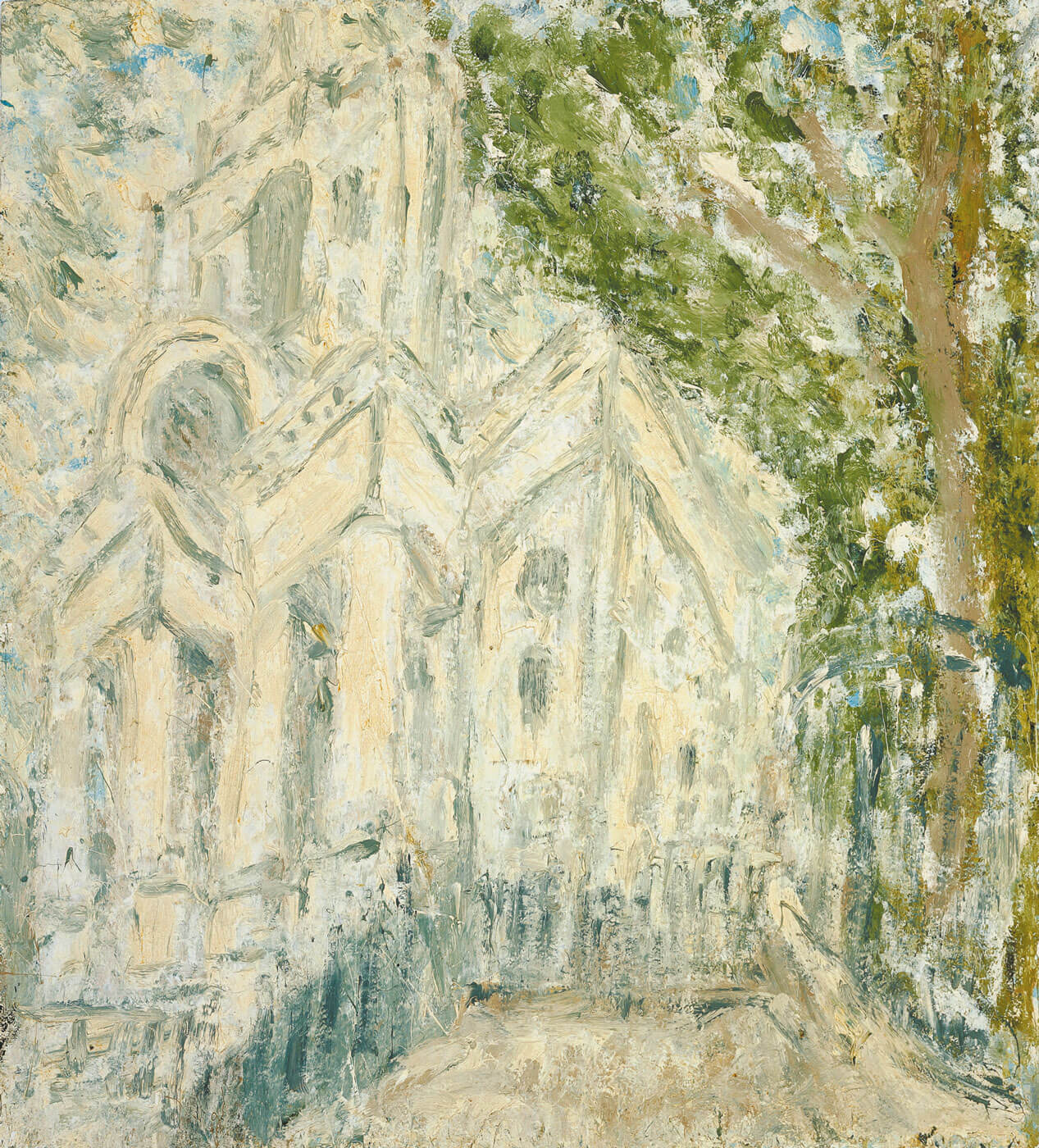Leon Kossoff
Selected Paintings 1956-2000
Leon Kossoff, who was born in London in 1926 to a family of Russian emigrants, is thought of as one of the most significant English artists of the 20th century. Along with his contemporaries Francis Bacon, Lucian Freud and Frank Auerbach he is generally included in the so-called ‘School of London’, those artists who did not devote themselves to abstract painting after the war, but returned to figuration and thus founded what was long held to be a typical characteristic of English painting. But this exhibition, conceived in collaboration with the Louisiana Museum of Modern Art, is not intended as a further attempt to place Kossoff’s art in the context of English painting after 1945. Instead, it seeks to give his painting a platform and present it in all its uniqueness.
Although Kossoff’s work has been shown in many exhibitions in England, and has received lucrative awards, this has not been true on the continent. The last time he was exhibited here was at the Venice Biennale in 1995, in a solo show that subsequently travelled to Düsseldorf and Amsterdam. The exhibition Leon Kossoff: Selected Paintings 1956–2000, conceived by Anders Kold, Curator at the Louisiana Museum of Modern Art, Humlebaek (Denmark) and Peter Fischer, Director of the Museum of Art Lucerne, is not only the artist’s biggest and most important exhibition do date in both Denmark and Switzerland, but of special significance in that the artist has granted the curators the first sight of a breathtaking amount of material of which he has taken great care for a long time, and allowed them access to this private collection of his own works. The twenty-or-so paintings selected from this collection, along with a dozen additional hand-selected paintings from private collections and museums, including key works from the Tate and the British Arts Council Collection, prove to be testaments to a life’s work and a long, impressive and constant career as a painter.
Kossoff has always been interested in a few rather unspectacular and everyday motifs from his immediate surroundings, which he has pursued tirelessly, almost obsessively since the start of his career. These include first and foremost views of the city in which he grew up and which he has barely left since then: London. These are not the landmarks of the city – not Tower Bridge, Nelson’s Column, Buckingham Palace – but railway lines (Willesden Junction), construction sites (YMCA Building Site) market stalls (The Flower and Fruit Stalls, Embankment) and the entrance to the underground (Outside Kilburn Underground).
On the other hand, and just as urgently, his work revolves the motif of the human being. Whether they be nudes or portraits, the people he paints are always the same, and as in his city views he has built up a close personal relationship with these people. Apart from his parents and brothers, one of his earliest models was the author M.N. Seedo, whose face he captured in a number of paintings. Head of Seedo is the succinct title of the painting from 1959, and shows the author’s face in three-quarters profile with her eyes closed. It is not a well-proportioned face, the features are hard and the mouth closed with the corners turned slightly down, the chin is angular. On top of that, the execution is anything but polished, in fact it is rather crude, but it is representative of the style of all his paintings: the paint is applied in such a thick impasto that one can quite easily have the feeling of being confronted by a three-dimensional object rather than a flat painting. The intense materiality of the paint produces a surface structure that is in a permanent state of change according to the way the light falls on it, while at the same time it gives visual form to the artist’s constant battle with what he sees and its transformation into what he considers to be a satisfactorily pictorial state.
What Leon Kossoff strives for is the creation of a relationship between paint and what he sees and perceives. He works on a painting until he has achieved that goal, and if this is not the case – and often it is not – he scrapes the paint off the canvas and begins again: «I know that there is no arrival, there’s only starting again, drawing and re-drawing…» The only thing he can do is go on looking, go on painting. The paintings produced in this way radiate an overwhelming intensity and urgency, and speak of an unpretentious artistic magnificence.
curated by Peter Fischer



